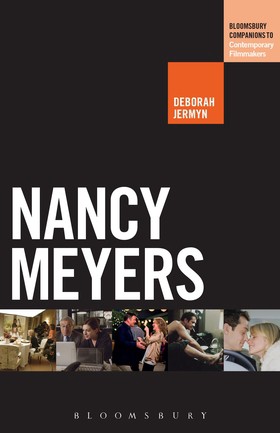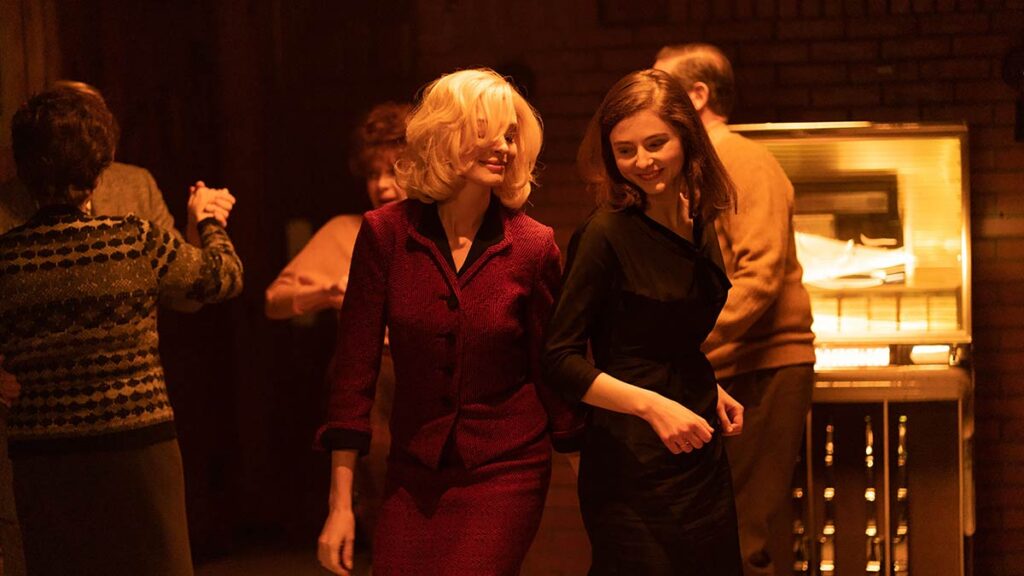The following is excerpted from Deborah Jermyn’s “Nancy Meyers,” which will be released July 27.
May 2014. A BBC journalist was on the phone. It was shortly to be the twentieth anniversary of the release of “Four Weddings and A Funeral” (Newell, 1994), one of the best loved, most successful British films and romantic comedies in film history. There was going to be a lot of coverage in the British media marking this milestone. I’d published a number of articles and a co-edited collection on romantic comedy, and taught Film degree classes on it — could the BBC interview me for a story?
I felt like a bit of a fraud as I told them that not only had I not seen the film in years, but also I was that strange thing — a British person who didn’t really like the film. To be honest, my overwhelming memory was of being a bit annoyed by it. Not to worry, said the journalist. We want to interview you for a story called “Why is the term romcom used so negatively?” and I agreed this was a thorny question that had often troubled me and one that I would happily talk about.
So an interview took place, where I spoke about how the pejorative use of the term was often imbricated with the assumption of an undiscerning female audience, and of mindless formulaic repetition which failed to acknowledge the capacity of the genre to make social comment; and I noted that this had not been the case with historical predecessors like the screwball comedy which were often received enthusiastically by both critics and public.
I mentioned that, like all genres, romcom had to keep bringing new inflections to bear to avoid becoming stale, and that “It’s Complicated” (Meyers, 2009) was a good example of this for the way it had centred on an older “love-triangle,” where a middle-aged divorced couple rekindle their relationship and have an affair. An accessible and pretty sympathetic story raising some of these issues appeared on the BBC website where I was cited alongside others who were presumably invested in thinking about the romcom as a genre with the capacity to be textured and intelligent, while simultaneously entertaining and amusing.
Billy Mernit, author of “Writing the Romantic Comedy” (2000), who has taught the genre on the UCLA Extension Writers’ Program, and Ben Palmer and Tess Morris, the director and screenwriter of “Man Up” (2015), the British romcom starring Simon Pegg and Lake Bell in production at that time all featured. The story when it came out was not groundbreaking. Nevertheless, it was rather refreshing and unusual, I thought, to see an article make an effort to be even-handed in considering the appeal and the possibilities of the much-maligned romcom, to try to unpack where the instant derision of it springs from, rather than just add fuel to it.
Then the journalist (@yasmeenkhan1) tweeted news of her story with a link to the website. The exchange that ensued, though brief, was intriguing. The first response went as follows, before others replied in these ways:
– “Great article — despite praise for It’s Complicated!:) #beige.”
– “Nancy Meyers has done a fair bit to damage perception of the genre. Too long, bland.”
– “But Meryl has SUCH an awesome house in that film.”
– ‘The Holiday, for example, is seven hours long. And nothing happens.”
– “… and The Holiday is really a softcore designer-porno about two beautiful homes in love.”
– “The only bit I choose to remember from that film is the Jack Black ‘boob graze.’”
– “I remember the general Jack Black ‘WTF am I doing in this piece of treacle?!’ gaze.”
I watched, bemused, as what was meant to be a social media plug for a story outlining a more considered approach to thinking about the romcom morphed instead into a forum for bashing Nancy Meyers and her work. The director of just five films at this time (namely, “The Parent Trap” (1998); “What Women Want” (2000); “Something’s Gotta Give” (2003); “The Holiday” (2006); and “It’s Complicated” (2009), a body of work which has since grown to include “The Intern” (2015)), the predominance of romantic comedy in her oeuvre has earned her the moniker of Hollywood’s “romcom queen,” along with other regal monikers like “Hollywood’s queen of the chick flick,” “queen of the late-in-life-love story,” and “Queen of saccharine.”
Yet with still such a relatively small body of directorial work to her name, and given the extended periods that have passed between her films, it clearly is not the vast volume of romantic comedies she has made that has bestowed the title “romcom queen” upon her. Rather, for those familiar with the genre, she has developed a distinctive “brand” that they now identify and anticipate.
Hers is a mode in which lovingly drawn mise-en- scene combines with an affection for the golden age of Hollywood elegance and classical style, contemplative dialogue and story turns (hence the repeated complaint her films are “too long”), and characters and settings drawn from a privileged (and resolutely white) milieu.
Indeed, the Screen International review of “The Holiday” boiled it down even more simply to say Meyers has “established her own brand of contemporary rom-com: guilty pleasure fantasies of love and longing set among successful people in their multi-million dollar residences.” Crucially, though, this characteristic attention to lavish sets and the upper middle class has become a stick to beat her with, as much as a descriptive marker of a “Meyers style.”
Furthermore, anyone with an interest in box office results will know her romcoms stand out among her peers too, not just for their distinctively tasteful design, but for having generated a great deal of profit. “What Women Want” became both the most commercially successful romcom of all time and the most commercially successful film of all time directed by a woman at the point of its release (making just shy of $183m in the United States alone).
But in this Twitter exchange, Meyers’s name is evoked only to signal what is wrong with romantic comedy; it is an opportunity for snappy jibes about how her films are annoying, how they are “#beige” and “bland,” rather than pleasurable. And this is the case even among people who seemed ostensibly to be open-minded about the gratifications and the attractions of the romcom — who critiqued its “bad press” in Khan’s article — yet who also, it seemed, enjoyed the occasion to share disdain for Meyers and her films.
Obviously some of this has to do with the nature of Twitter and its trade in “pithy” rejoinders. But the short exchange of 140- character messages actually revealed a number of traits that I have come to see as common in the reception of Meyers in the process of researching this book about her.
These are traits which I will unravel at greater length in what follows, as I trace how one of the most significant women practitioners in post-classical Hollywood has been the subject both of academic neglect and continued critical denigration, and as I make the case for a more nuanced, comprehensive and measured consideration of her work than has as yet been undertaken.
In this Twitter exchange, there is nothing recognizing how enormously popular her films have been, or contemplating the possible pleasures of her work. They are all about empty gloss, about superficialities, not substance we learn.
Indeed, as shall become evident in this book, reviewers return repeatedly to the issue of how Nancy Meyers’s films look; in particular her films’ (professedly overly opulent) houses. These have taken on a kind of cultural currency of their own, pored over on design websites and blogs by interior design professionals, journalists, and fans. Yet at the same time, they are regularly maligned by film critics who see her devotion to intricate texture, color, and style coordination as a kind of empty and shallow distraction. In this way, a skill, a distinctive quality that one can well imagine would be remarked on as “an eye for detail” in a male director, is used in Meyers’s case to imply she can’t really “do” more substantial work like original character or plot (consider, for example, how Douglas Sirk’s lavish use of Technicolor became seen as a marker of the masterful and expressive emotive range of his films rather than merely a similarly predictable and ostentatious gimmick).
And her films are saccharine, we are told — in this exchange, compared to “treacle” — which is to say, sickly sweet nonsense. Such food metaphors are again prevalent in the reception of her work (The Guardian, for example, called “The Holiday” “the celluloid equivalent of having melted Mars Bars poured down your throat”), as they are in romcom broadly. They suggest that there is no nourishing artistic sustenance to be had here, often conjuring up an image of women audiences lacking restraint and willpower gorging themselves on sugary goodies they should know aren’t good for them.
Particularly interesting, though, is the familiar and belittling invoking of her work as a form of lifestyle porn, a description which again comes up repeatedly in reviews of her work. While the popular and flippant usage of the “-porn” suffix has become common in the vernacular of postfeminist discourses, it is striking here for the insidious manner in which it operates as a reminder that the person behind these films is a woman.
The flippant suggestion that Meyers makes “softcore designer-pornos” glibly denigrates her skills as a female director (and, by extension, questions and undermines the tastes of her audiences), slyly reminding us in the process that she is out of place in having achieved such mainstream commercial momentum in Hollywood, that the “proper” territory for women in film lies not somewhere behind the camera or in command of it, but in the realm of sexualized spectacle.
In some ways, appropriately enough for a woman director whose career predates and spans the shift from second wave feminism to postfeminism, the use of the porn “metaphor” is the ultimate postfeminist putdown of her work; if you don’t think it’s funny or see it’s meant “ironically” then the problem is with (uptight) you, not the (cool) person using it to take a shot at Nancy Meyers.
In the series of tweets above, none of the exchanges begin to engage with how significant her achievements are in an industry that has consistently marginalized and excluded women filmmakers. Instead, what this moment from the Twitterverse postulated is that there is a reason why the contemporary romcom gets a bad rap, there is someone who sums up (or at least, who we can blame for) this scorn for the genre — and that is Nancy Meyers.

Deborah Jermyn is a Reader in Film and Television at Roehampton
University, UK. She is the author and editor of numerous books
exploring women, feminism, and popular culture including “Female
Celebrity and Ageing: Back in the Spotlight” (2013), “Sex and the City”
(2009), and “Hollywood Transgressor: The Cinema of Kathryn Bigelow”
(2003).







